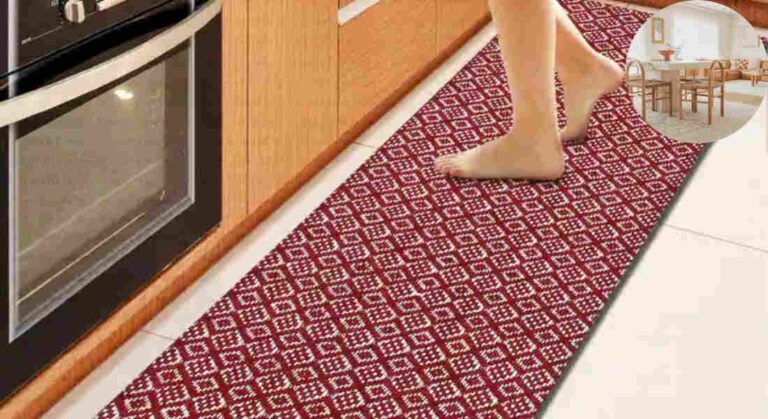When it comes to designing or sprucing up your kitchen, there’s one often-overlooked detail that can make a huge difference: the kitchen runner rug. Not only does it add an extra layer of comfort and personality to one of the most used spaces in your home, but it also plays a practical role in protecting your floors and creating a safer, more functional environment.
But here’s the central question many homeowners ask: What size is a home kitchen runner rug? Choosing the correct size impacts your kitchen’s aesthetics, functionality, and safety.
Why Kitchen Runner Rugs Matter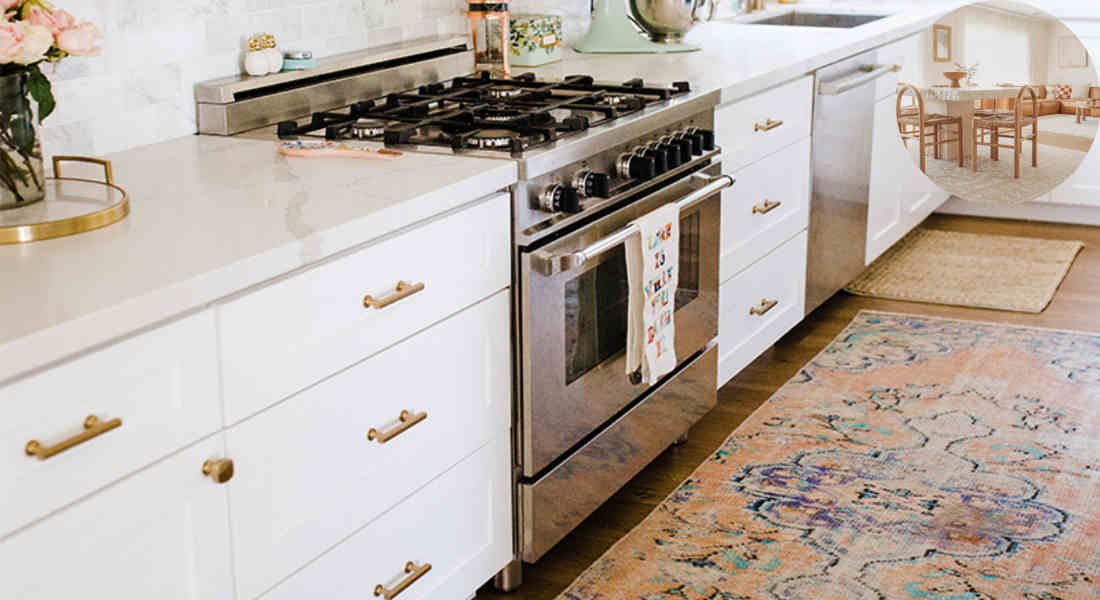
Kitchen runner rugs are more than just decorative elements. They are essential for comfort, safety, and style. Let’s dive into why they’re worth considering.
Comfort and Functionality
Standing for extended periods while cooking or cleaning can cause discomfort. A kitchen runner rug provides a soft, cushioned surface that reduces strain on your feet and joints, offering a comfortable experience. Plus, it helps keep your floors clean by catching spills and debris.
Safety
A properly placed runner rug can minimize the risk of slipping on slick kitchen floors. It also prevents scratches and wear from heavy foot traffic, especially in high-use areas like in front of the sink or stove.
Style
Runner rugs are an easy way to add personality to your kitchen. Whether you prefer bold patterns, soft neutrals, or something in between, there’s a rug to suit your taste. Plus, the right size can enhance the flow of your space, making it feel more open and inviting.
Understanding Kitchen Runner Rugs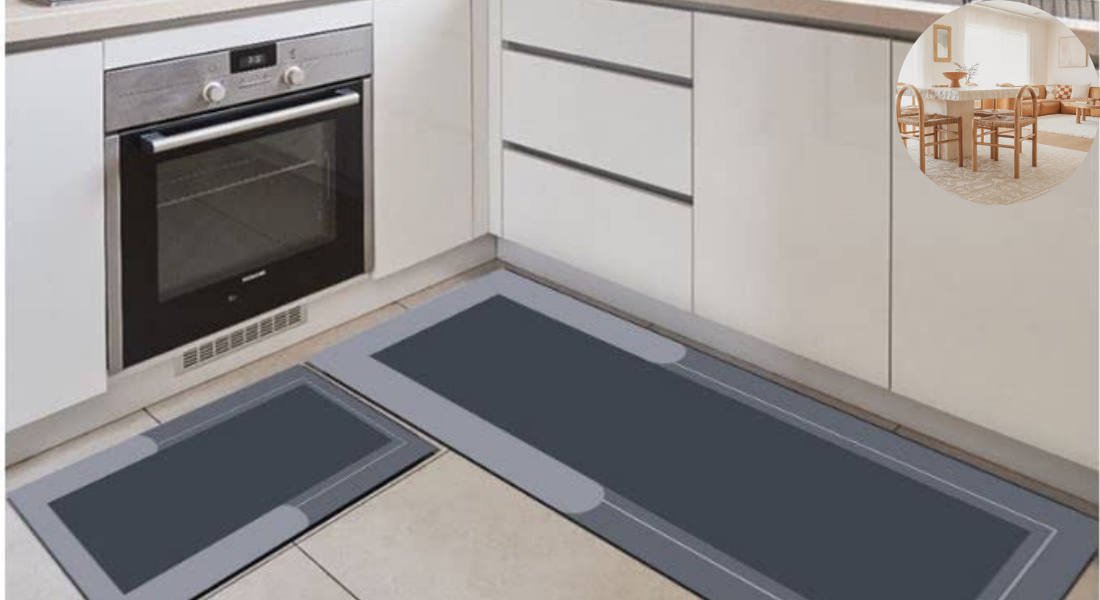
To better appreciate the importance of finding the right size, let’s first understand what kitchen runner rugs are and their purpose.
What Is a Kitchen Runner Rug?
A kitchen runner rug is a long, narrow rug designed to fit specific areas in your kitchen, such as:
- The space between your countertops and an island.
- The area in front of a sink or stove.
- Pathways in open-concept kitchens.
Benefits of Kitchen Runner Rugs
- Comfort: Provides a softer surface for standing during meal prep or cleanup.
- Protection: Shields floors from spills, scratches, and stains.
- Style: Adds warmth and character to your kitchen.
Common Materials and Styles
When choosing a runner rug for the kitchen, consider durable and easy-to-clean materials like:
- Cotton: Lightweight and washable.
- Wool: Naturally stain-resistant and soft underfoot.
- Synthetic fibers (nylon, polyester, etc.): Highly durable and stain-resistant.
Why Size Matters: The Impact of Choosing the Right Kitchen Runner Rug Size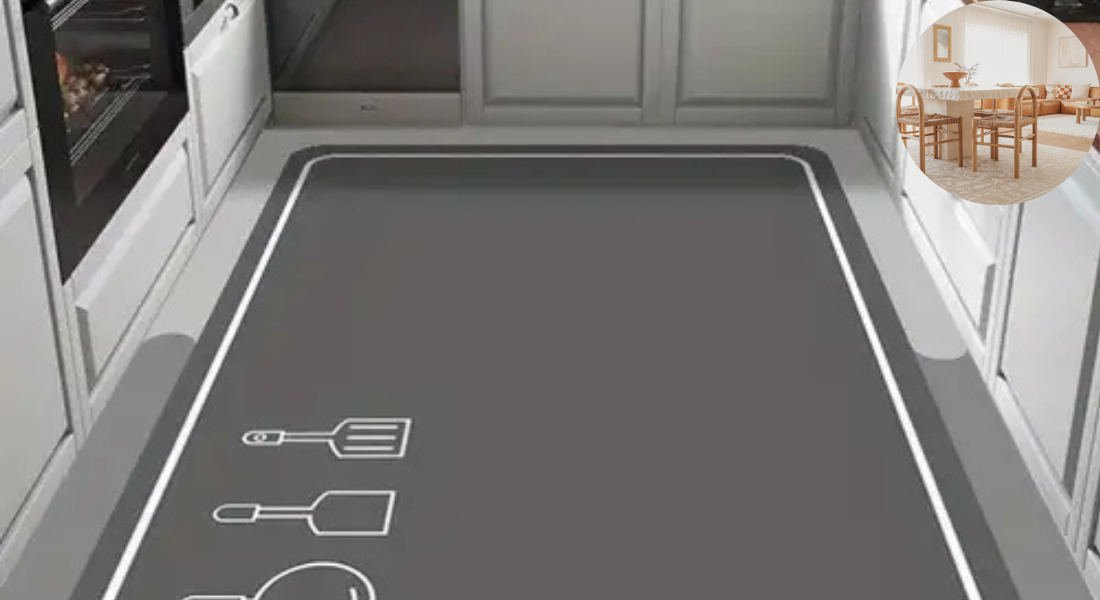
Selecting the right size for your kitchen runner rug is crucial to achieving a balance between practicality and design.
Safety First
A rug that’s too large or too small can create tripping hazards. Ensuring your runner fits well within the space prevents accidents and keeps high-traffic areas safe.
Enhancing Space Flow
The size of the rug has a significant impact on the overall feel of the kitchen. A well-sized carpet can make your space feel more cohesive and functional, while a poorly sized one can make it feel cluttered or awkward.
Balancing Coverage and Openness
Your kitchen layout plays a significant role in determining how much of the floor should be covered. Leaving some space (typically 6–10 inches) around the rug edges ensures a balanced look without overwhelming the room.
Standard Sizes for Kitchen Runner Rugs
When determining the size of a home kitchen runner rug, there are standard dimensions that work well in most kitchens.
Width Length Best Use
2–3 feet (60–90 cm) 6–14 feet (183–426 cm) Narrow pathways or long countertops
2.5′ x 7′ (76 x 213 cm) Popular size for most kitchens Ideal for covering spaces between counters
Why These Sizes Work
- 2–3 feet wide: Just wide enough to provide coverage without feeling bulky or intrusive.
- 6–14 feet long: Suitable for most kitchen layouts, whether you have a small galley kitchen or a spacious open concept.
Measuring Your Kitchen for the Perfect Runner Rug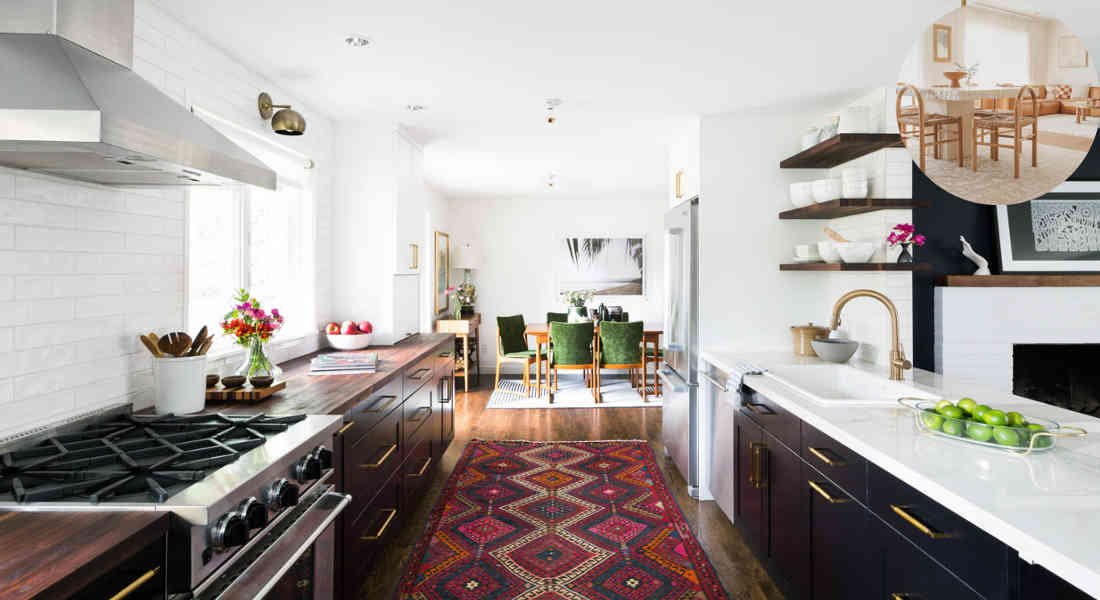
Before purchasing a runner rug, it’s essential to measure your space accurately. Follow this step-by-step guide to get it right.
- Identify Key Areas
- Decide where you want the rug. Common areas include:
- In front of the sink or stove.
- Between counters and an island.
- Along a pathway in an open layout.
- Measure Length and Width
- Use a tape measure to determine the available space.
- Leave a gap of 6–10 inches around the edges for safety and aesthetics.
- Account for Obstacles
- Measure around fixed furniture, such as islands, cabinets, or appliances.
- Ensure the rug won’t block drawers, doors, or vents.
Choosing the Right Runner Rug Size Based on Kitchen Size and Layout
Small Kitchens
- Ideal sizes: 2’6” x 4’ to 3’ x 5’
- Placement tips: Place the rug in front of the sink or stove to maximize comfort in smaller spaces.
- Design tip: Opt for lighter colors or patterns to make the kitchen feel larger.
Medium Kitchens
- Ideal sizes: 2’6” x 8’ or 3’ x 5’
- Placement tips: Use multiple rugs to define zones in open-concept kitchens.
- Design tip: Ensure the rugs complement the overall decor without overcrowding the space.
Large Kitchens
- Ideal sizes: 6–14 feet long, or opt for custom sizing.
- Placement tips: Use long runners to define pathways or areas around an island.
- Design tip: Neutral tones and subtle patterns work best to create harmony in larger spaces.
Customizing Your Kitchen Runner Rug Size
If standard sizes don’t suit your kitchen, consider a custom-sized runner rug.
Benefits of Custom Rugs
- Perfect fit for unique kitchen layouts.
- Freedom to choose specific dimensions, colors, and materials.
How to Measure for Custom Rugs
- Use the same steps mentioned earlier, but include precise details about any obstacles that may arise.
- Note any unusual angles or curves in your kitchen layout.
Additional Tips for Selecting Kitchen Runner Rugs
- Durable Materials: Choose rugs made from wool, synthetic fibers, or other easy-to-clean materials for high-traffic areas.
- Coordinating Colors: Match the rug to your kitchen’s decor for a cohesive look.
- Rug Pads: Add a non-slip rug pad for extra comfort and safety.
- Maintenance: Vacuum regularly and clean spills immediately to keep the rug looking fresh.
Common Mistakes to Avoid
- Buying the Wrong Size
- A rug that’s too large or small can throw off the room’s balance.
- Ignoring Layout and Flow
- Always consider traffic patterns and how people move through your kitchen.
- Skipping Measurements
- Don’t guess — measure carefully to avoid costly mistakes.
You may also read (the truth about drains in home kitchen faucets).
